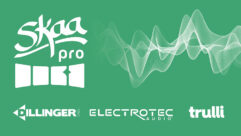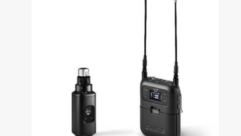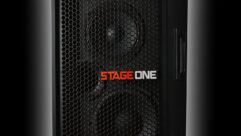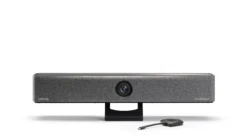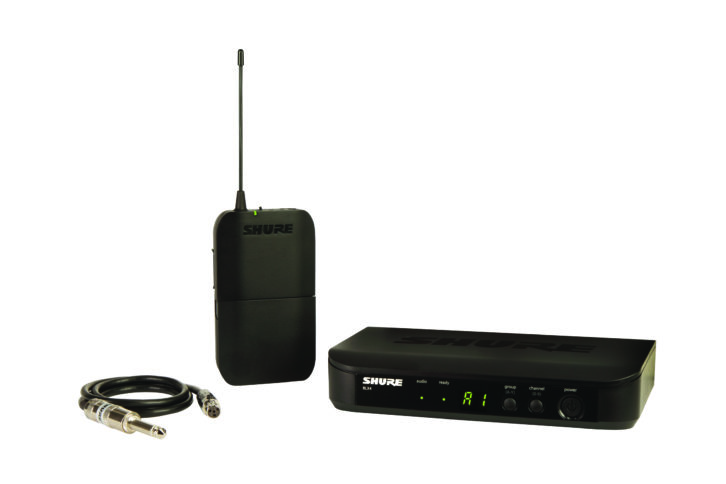
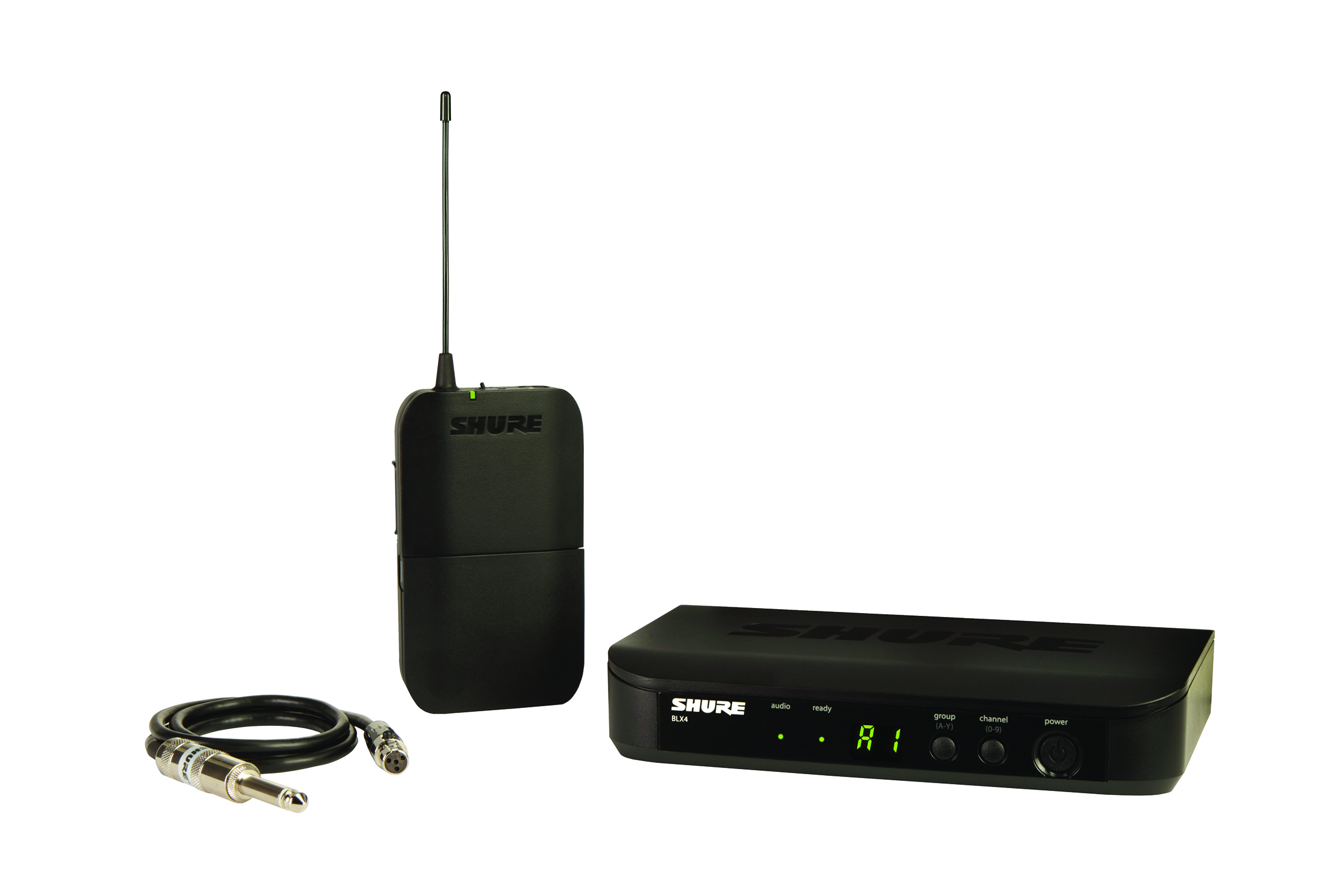
“Cheap” has more than one meaning. The two most common definitions are “inexpensive” and “flimsy.” The term “inexpensive” is a measurable quantity and, hence, is objective in nature, while “flimsy” is a subjective judgment. While it’s possible for a product to be inexpensive and not flimsy, there is a greater likelihood for inexpensive products to be flimsier than their more expensive counterparts. When potential customers hear “cheap,” a lot of context is necessary for them to sort out what is meant.
Shure is known for high-quality products at prices across a moderately broad range. I was sent a bundle of technology from Shure that included a BLX4 wireless receiver and BLX1 bodypack transmitter, along with two microphones; a PGA31 headworn and CVL-B/C lavalier mic. As I started my research to get the facts about this technology, I was truly shocked to discover that it very solidly fits the “inexpensive” definition of cheap. I set about determining how it would fare in terms of our other metric.
The BLX4 wireless receiver is the largest piece of the system, about 6in. long, 4in. deep, and a bit more than 1in. tall. Its molded black ABS plastic case is very lightweight—only 8.5oz.—but actually feels sturdy despite its lack of mass. It’s also dead simple. The front panel features LEDs to indicate readiness and signal level, along with a two-digit LED group/channel display, pushbuttons to determine group and channel, and a power pushbutton. Its rear panel has only a DC power inlet, power cord tie-off, and both XLR and 1/4in. TRS outputs, representing mic and instrument levels, respectively. I turned the receiver over in my hands a few times before I came to grips with the fact that it has no antenna jacks. Shure has developed internal antenna technology sufficient to give the system a range of 300ft., so long as line-of-sight is maintained.

The BLX1 bodypack transmitter is similarly lightweight and small, calling to mind a deck of playing cards in terms of size and dimensions, and weighing about 2.5oz. without its two AA batteries. Atop its molded black ABS case are a TA4 4-pin mic jack, a sliding power switch, an LED indicating power and battery status, and the unit’s antenna, which is formed of flexible rubber and is just short of 4in. long. The lower half of the case is a door, hinged along the bottom for access to the transmitter’s battery compartment, display, and controls. As with the BLX4 receiver, there are group and channel pushbuttons as well as an LED display to indicate the choice made with those buttons. There is also a flush knob that adjusts the transmitter’s audio gain.
I have one substantial complaint about the system in general, and it manifests both in the receiver and in the bodypack: The printed labeling is very small. I understand that there’s only so much real estate available on such small enclosures, but the readability of tiny letters can be improved by increasing the color contrast. The cases are a dark charcoal color, and the print is off-white. Bright, titanium-dioxide white would be very welcome as a means for improving readability.
The PGA31 headworn microphone follows the line of the other components. It’s simple, lightweight, and sturdy. It’s not dainty. The mic capsule is just shy of a 1/2in. in diameter and is equally thick. While it’s not sleek and virtually invisible at 10 paces, it is inexpensive— and that is clearly its reason for being. One other compromise that keeps this mic affordable is that the boom cannot be rotated to allow use on either side of the head. It is permanently on the user’s right side.
Similarly, the CVL-BC lavalier mic is unremarkable. The build quality feels sturdy, and due to its diameter approaching 3/8in., will require a little doing to conceal, particularly if you use the included windscreen that’s roughly 3/4in. in diameter. As with the headworn mic, you’ll have to cough up a lot more cash to get wispy, reed-slender hardware and match-head-size capsules.
Both mics exhibit a broad frequency range, extending up to 20kHz, and down to 60Hz in the headworn and 50Hz for the lav. One minor drawback is that the upper end of the wireless system frequency range rolls off at 15kHz. Again, considering that this system is intended for the budget-conscious, this is not a deal-breaker. The “air” up above 15kHz is nice, but not necessary for clean, clear voice amplification or recording. The response of the headworn accentuates the frequencies that add clarity, ramping up from about 2.5kHz to just above 4kHz, tapers back down above 10kHz, and exhibits a substantial dip—about 7dB—centered around 7kHz. The lav similarly ramps up from about 3kHz to about 6kHz, then tapers back off, with two dips, centered just above 7kHz and 12kHz, respectively. In both cases, the dips in response do not negatively affect the clarity.

The headworn actually delivers a pleasant, intimate vocal— vastly better than what I’d expect for the price. They’ll both suffice for spoken word, with the headworn being preferable between the two. Many speakers will shun the headworn for aesthetic or comfort reasons, but the lavalier is not a bad compromise, particularly if it’s placed properly. To get sufficient low-frequency response, this lav must be placed relatively high—not right under the chin, but certainly at collarbone height. The proximity effect in this mic is pronounced, and it helps to achieve better low-end response.
All major pro audio manufacturers acknowledge that the marketplace is broad in terms of consumer budgets. For this reason, they offer high-end technology at the upper end of the price spectrum and less sophisticated tech at the other extreme. Every once in a while, the quality or performance of a product in the budget-conscious domain will surpass expectations, and I would submit that this system does just that. Although the light physical weight of the transmitter and receiver evoke mediocrity upon initial examination, the build quality is better than expected. Audio quality is vastly more important than physical appearance, and the system truly does exceed expectations in that domain. The headworn mic is substantially better and preferred over the lavalier, but headworn mics are preferred over lavs in general, regardless of manufacturer. This system is shockingly inexpensive but does not sound that way. Better audio performance is available at higher prices, but if your budget so dictates, you can still get good quality with this system.
John McJunkin is the principal of Avalon Podcasting in Chandler, Ariz., and produces and cohosts a top-rated morning radio talk show in Phoenix. He has consulted in the development of studios and installations and provides high-quality podcast and voice production services.
Product Summary
Company: Shure | www.shure.com
Product: Shure PGA31 Headworn/CVL-BC Lav/BLX Wireless
Pros: Impressive performance considering price
Cons: Tiny, low-contrast labeling
Applications: Installed, live wireless applications requiring spoken word, live vocals
Price: $159 (BLX4); $139 (BLX1); $39 (PGA31-TQG); $39 (CVL-BC-TQG)
Specifications
BLX4 Wireless Receiver
• Working Range: 91meters (300ft.) line of sight
• Audio Frequency Response: 50Hz-15kHz
• THD (Ref. ±33kHz deviation w/1kHz tone): 0.5% typical
• Dynamic Range: 100dB (A-weighted, typical)
• Output Impedance: XLR connector: 200Ω; 1/4in. connector: 50Ω
• Audio Output (Ref. ±33kHz deviation w/1kHz tone): XLR connector: -27dBV (into100kΩ load); 1/4in. connector: -13dBV (into 100kΩ load)
• RF Sensitivity: -105dBm for 12dB SINAD, typical
• Image Rejection: >50dB, typical
BLX1 Bodypack Transmitter
• Audio Input Gain Range: 26dB (-16dBV to +10dBV)
• Input Impedance: 1MΩ
• RF Transmitter Output: 10mW, typical
PGA31-TQG Headworn Microphone
• Frequency Response: 60Hz-20kHz
• Polar Pattern: Cardioid
• Output Impedance (@1kHz, typical): 600Ω
• Audio Output Level: -50dBV/Pa
• Signal-To-Noise Ratio (@1kHz): 66dB
• Maximum SPL (1kΩ load, 3% THD): 145.0dB
• Dynamic Range (@1kHz, 1kΩ load): 117.0dB
• Equivalent Output Noise (typical, A-weighted): 28dB
CVL-BC-TQG Lavalier Microphone
• Frequency Response: 50Hz-20kHz
• Polar Pattern: Cardioid
• Output Impedance (@1kHz, typical): 600Ω
• Audio Output Level: -43.5dBV/Pa
• Signal-To-Noise Ratio (@1kHz): 72dB
• Maximum SPL (1kΩ load, 3% THD): 139.0dB
• Dynamic Range (@1kHz, 1kΩ load): 117.0dB
• Equivalent Output Noise (typical, A-weighted): 22dB



